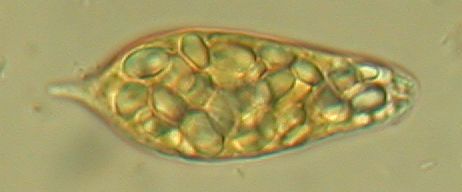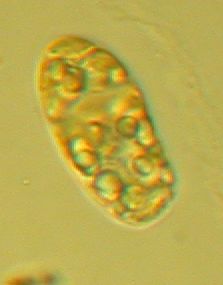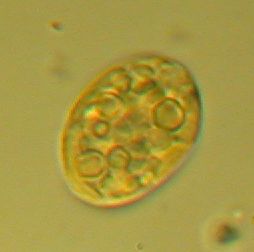Well, this is getting difficult! What we till now on were happy and content to call Euglena actually includes two groups of organisms, that have to be placed in two different genera: Euglena and the new Euglenaria. Euglenaria means Euglena-like.
And they certainly are, Euglena-like. For Euglenaria‘s are morphologically indistinguishable from the “old” Euglena‘s. The difference of these taxa lies in the genes, far beyond the resolving power of the microscope.
The difficulty for a regular plankton counter is, that if one can’t identify a taxon to a specific Euglena-species, one has to jump one stick upwards on the taxonomic ladder and call the taxon Euglenophyceae. This is something a true algae counter does not like.
So say farewell to these species, that earlier could have been called Euglena ssp, but now have to be referred as Euglenophyceae:



It’s frustrating, because they are clearly not Strombomonas or Phacus, for example, which are other genera in the Class Euglenophyceae. It would be satisfying to be able to make this difference clear in the algae lists too. But what to do? Make a notation, of course. But further? Call them Euglenophyceae Euglena vetus?
Literature:
Eric W. Linton, Anna Karnkowska-Ishikawa, Jong Im Kim, Woongghi Shin, Mathew S. Bennett, Jan Kwiatowski, Bozena Zakrys, and Richard E. Triemer (2010). Reconstructing Euglenoid Evolutionary RelationshipsusingThreeGenes: Nuclear SSU and LSU,and Chloroplast SSU rDNA Sequences and the Descriptionof Euglenaria gen. nov.
(Euglenophyta). Protist, Vol.161,603–619, October 2010.
